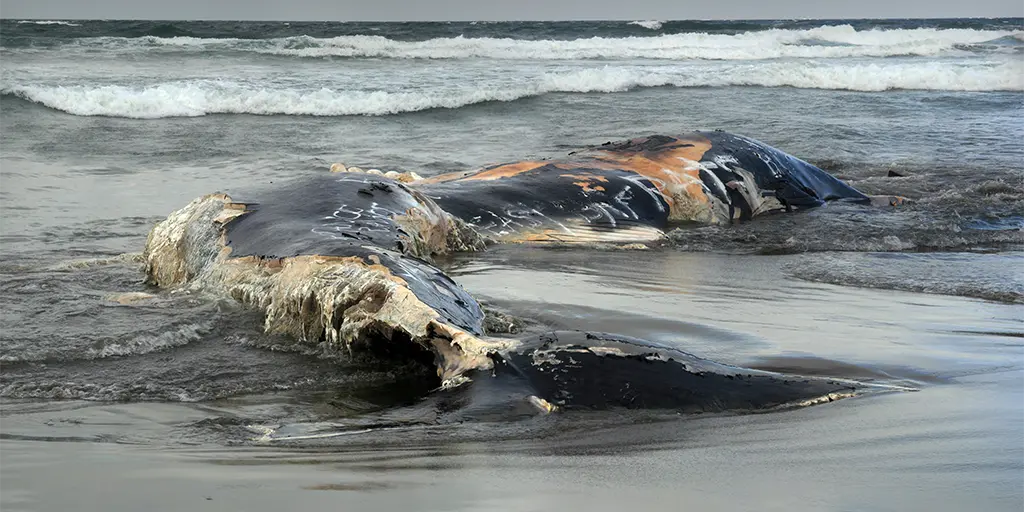From CFACT
By David Wojick
Systematic statistical analysis indicates that offshore wind development has likely been killing lots of whales since it began around 2016. This long-standing conjecture that wind kills whales may be confirmed.
Call it forensic statistical epidemiology. The epidemic is the huge number of Northwest Atlantic whale deaths that were first officially observed by NOAA in 2016-17, and that continued to this day. It is forensic because killing whales can be highly illegal.
This math feat was performed by Apostolos Gerasoulis, a Rutgers professor emeritus of computer science. This is a computer math problem, not a biological one, so he is exceptionally qualified. See https://www.cs.rutgers.edu/people/professors/details/gerasoulis-apostolos
Professor Gerasoulis has confirmed with profound statistical evidence the widespread conjecture that offshore wind sonar surveys have been killing whales. There is now no reasonable doubt that the extensive sonar harassment authorized by NOAA since 2016 has caused the massive increase in whale deaths that NOAA first flagged in 2016-17.
Here is a lengthy article that provides some of that compelling evidence:
Given that I and others have been yelling at NOAA about this for two years, it is not a stunning discovery to us, just tragic proof that we were right. For example:
https://www.cfact.org/2022/09/27/how-to-kill-whales-with-offshore-wind
And https://www.cfact.org/2023/01/23/evidence-says-offshore-wind-development-is-killing-lots-of-whales/
I have repeatedly pointed out that the overall Humpback Whale death rate doubled when sonar blasting began. Gerasoulis finds that in the region where the surveying was most active, the death rate jumped to an astonishing five times greater.
It took a computer guru to do this pioneering work because it is a complex computation problem. He geographically logged all of the deaths and all of the sonar blasting routes over time, then looked at the correlations, which are profound. It is statistically impossible that these correlations between sonar blasting and dead whales are just a coincidence.
Note that the sonar blasting does not kill the whales outright. It is predicted by NOAA to change the whale’s behavior, so all it has to do is change it in deadly ways, such as causing a ship strike. It is actually expected by NOAA that some whales will be deafened.
Here is a telling analogy. A firecracker thrown at a dog causes it to run into the street and be struck by a car. The car killed the dog, but the firecracker caused the death. In science, this is called the first cause (firecracker) versus the final cause (car strike) of the dog’s death. Sonar blasting is like an endless string of firecrackers going off, lasting for hours or even days.
The press has consistently ignored the warnings, never reporting the potentially adverse effects of “harassment”, as it is officially called. That widespread acoustic harassment is actually predicted and authorized by NOAA is never even mentioned. Even worse, NOAA never mentions it in their online material on the whale death crisis despite it being pointed out to them repeatedly.
Unfortunately, the incredibly loud pile driving that is now starting at the offshore wind construction sites is even worse than the sonar blasting. The NOAA harassment authorization numbers are much higher, ten times higher in some cases. We, therefore, expect the deaths to increase unless decisive action is taken.
Now that the numbers indicate that authorized harassment is likely the cause of widespread whale death, something must be done to stop the carnage. If NOAA continues to authorize potentially deadly harassment without first studying the data, and if wind developers continue unabated, each whale death is a reckless violation of the Marine Mammal Protection Act. Gerasoulis‘s statistical model may even tell us when this happens.
Given this compelling new evidence, if NOAA still refuses to act, then either the President or Congress should do so. Acoustic harassment is ongoing, and whales may be dying from it. This reckless killing of whales must stop.
Photo creative commons Brocken Inaglory, CC BY-SA 3.0 https://creativecommons.org/licenses/by-sa/3.0, via Wikimedia Commons


